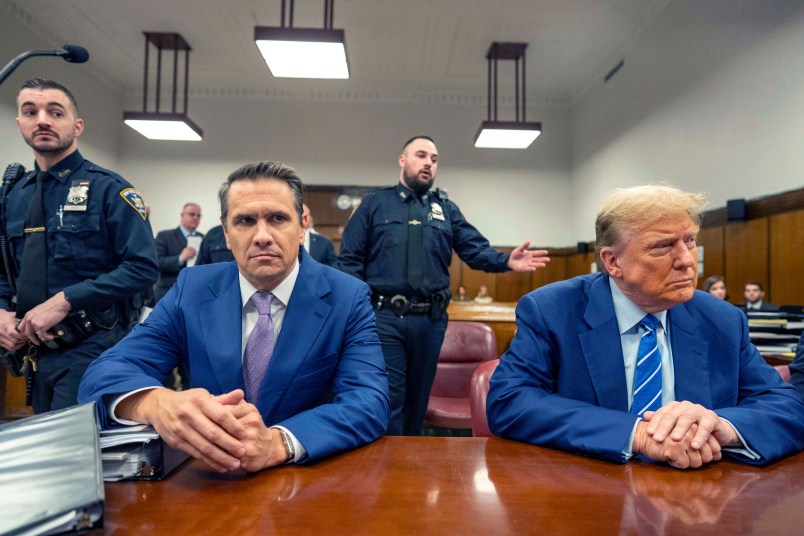Thousands of civil servants are entering the holiday season fearful of a new Trump policy that could change their lives for the worse.
Now, that policy has take on the form of an Excel file.
The spreadsheet — or rather, multiple spreadsheets, spread across the executive branch agencies — is currently being used to compile a list of federal employees that will lose civil service protections and instead be treated as “at-will” presidential minions, newly vulnerable to political pressure, arbitrary dismissal and meddling from on-high.
Though time is running out for him, President Donald Trump’s October executive order creating this new class of government employees — known as “Schedule F” — has spooked unions and public policy advocates worried about last-minute purges and score-settling from political appointees.
The order is “a constitutional dumpster fire that everybody’s going to have to figure out how to put out together,” said Jason Briefel, director of policy and outreach for the Senior Executives Association, a professional organization for senior civil servants.
In essence, Trump’s order says that certain government workers ought to be much easier to fire — specifically, those in “positions of a confidential, policy-determining, policy-making, or policy-advocating character.”
Trump’s order says these “Schedule F” positions will lose their civil service protections, becoming more like political appointees who are named by (and accountable to) the President and his deputies around the government. It’s part of the administration’s years-long struggle against government employees.
That’s what the Excel sheet is for: Fulfilling the President’s wish for a government-wide list of jobs he wants more control over.
In October, Trump directed agencies to provide preliminary lists of Schedule F positions within 90 days of his executive order — that is, by Jan. 19, the day before Joe Biden’s inauguration. But the political leadership of some agencies are rushing to get their work done early.

Briefel provided the document to TPM, along with messages from the administration’s Office of Personnel Management — the government’s H.R. department — to agency personnel officials.
Agencies Make Their Lists For The President
Last month, the Office of Management and Budget became the first to complete its preliminary list, and the results sent a chill across the federal payroll: According to a memo first obtained by RealClearPolitics, 88% of the OMB work force — 425 employees — would be classified as Schedule F.
Since then, the Department of Energy and Office of Personnel Management, which itself is tasked with carrying out the Schedule F order, have reportedly begun their own lists. But that’s only what’s been leaked to reporters. (A spokesperson for OPM declined TPM’s request for comment.)
“It appears that most of the major agencies are working on it,” said Richard Loeb, senior policy counsel at the American Federation of Government Employees.
And yet, five weeks after the President’s order, the rules for who is and isn’t Schedule F remain vague, leaving plenty of latitude for political bosses at the agencies.
“That’s a feature, not a bug for them,” argued Yevgeny Shrago, a visiting fellow at the Center for Economic and Policy Research’s Revolving Door Project. “The idea is to provide maximum flexibility for them to do whatever they want, and not worry about constraining themselves with the law.”
While the re-scheduling of federal employees could lead to widespread firings, Shrago speculated that the timeline may be too short for even the Trump administration to carry out a large-scale purge.
Instead, he said, political appointees could use Schedule F to get back at civil servants who’ve shown insufficient loyalty to the President or who have simply annoyed them — what he described as “score-settling.”
A split Congress could act to stop Trump’s order, but it’s unclear if Democrats proposing as much have any support from across the aisle. The National Treasury Employees Union has also sued the administration over the rule, though arguments haven’t yet been heard in the case.
The ‘Deep State’ Trump Always Wanted
It’s not just the specter of politically-motivated firings: The Trump administration could also use the new classification to place political appointees into vacant Schedule F positions, which would allow them to continue working under the Biden administration.
Such “burrowing” of political appointees into career civil service jobs does sometimes occur toward the end of a presidential administration — but normally, the appointee goes through a process to ensure that a given office-holder is qualified. Not so with the newly created class of Schedule F jobs.
And if the next President tries to dismiss these people, they could claim in court that he had carried out a “prohibited personnel practice” — namely, that he targeted them because of their political work for Trump.
“Schedule F would be creating a vehicle for broad-scale, government-wide burrowing in of political appointees,” said Briefel, of the Senior Executives Association.
Biden could eventually address those political holdovers — but they’d be another Trump-created mess for the future administration.
“They will present the Biden administration with the unappetizing possibility that they will have a bunch of Trump-appointed Schedule Fs in place,” Loeb predicted. Between addressing those holdovers and restoring jobs of those potentially dismissed over the next two months, he said, the Biden administration could be facing months of work — “a pain in the neck.”
The next president, Loeb said, will be stuck “having to essentially fix the gears of government that had been smashed up on [Trump’s] way out the door.”










